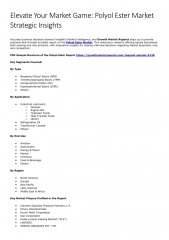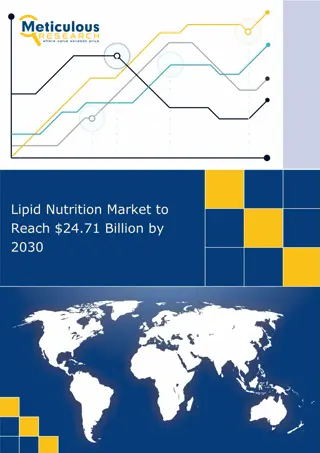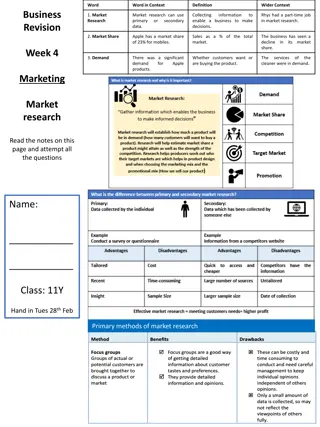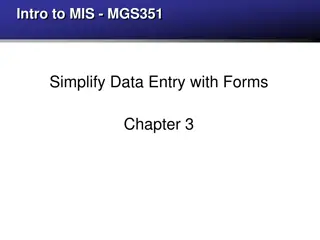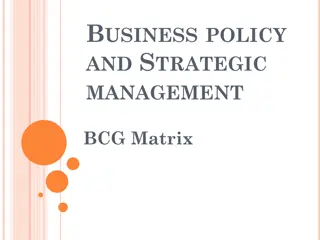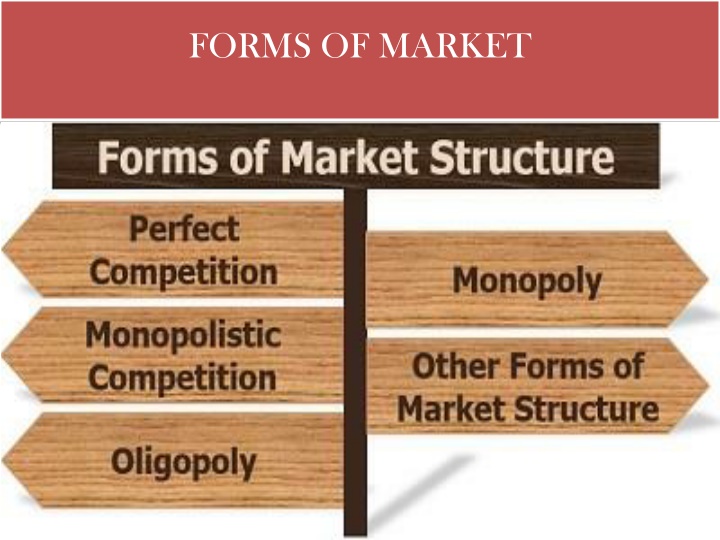
Market Forms: Monopoly and Monopolistic Competition
Explore the concepts of monopoly and monopolistic competition in the market, where a single seller dominates without substitutes in a monopoly, and numerous buyers and sellers compete with differentiated products in monopolistic competition. Learn about pricing strategies, market structures, and more.
Uploaded on | 0 Views
Download Presentation

Please find below an Image/Link to download the presentation.
The content on the website is provided AS IS for your information and personal use only. It may not be sold, licensed, or shared on other websites without obtaining consent from the author. If you encounter any issues during the download, it is possible that the publisher has removed the file from their server.
You are allowed to download the files provided on this website for personal or commercial use, subject to the condition that they are used lawfully. All files are the property of their respective owners.
The content on the website is provided AS IS for your information and personal use only. It may not be sold, licensed, or shared on other websites without obtaining consent from the author.
E N D
Presentation Transcript
MONOPOLY The word monopoly evolved from two Greek words Mono (Single) and Polus(Seller). It is a market in which there is a single seller selling a product which has no close substitutes. Example:
Single Seller Firm itself is industry. The firm can determine the supply and price. However, firm can sell more only by reducing the price. So, MR curve and AR curve slopes downward from left to right. Revenue earned from each additional unit(MR) is less than the Average Revenue(Price). So, MR is less than AR.
No close substitutes: The products of a monopoly firm does not have any close substitute. So, there is no competition. Barriers to entry and exit: There may be legal restrictions like licensing or patent rights or it may be due to heavy investment. So, firm earn abnormal profit. New firms cannot enter.
Price discrimination: A monopolist may charge different prices for the same product from different consumers. It is called price discrimination. Price Maker: Firm is industry. So, firm can determine the quantity and price.
MONOPOLISTIC COMPETITION It is a market in which there are large number of buyers and sellers dealing with closely related but differentiated products.
Large Number of Firms: There are large number of firms. Each firm sells a differentiated product. So, firm has monopoly over its brand. So, firm is price maker. Product differentiation: Each firm sells a differentiated product. So, firm has monopoly over its brand. So, firm is price maker.
Selling Cost: Firm has to spend huge amounts of money for advertisement and sales promotion. Firm has to make its popular and build brand image and brand loyalty. Freedom of entry and exit: Firms have the freedom of enter and exit. So, firms cannot earn abnormal profits in the long run.
Firm is price maker: As the firm has monopoly over its brand, it can fix price. Non price competition: Firms compete with others by offering free gifts, extended warranty, credit facility etc. It is called non-price competition.
DEMAND CURVE UNDER MONOPOLISTIC COMPETITION There are large number of firms selling differentiated products. So, the firm can sell more only by reducing the price. So, demand curve will be downward sloping from left to right. Demand curve under monopolistic competition is more elastic than the demand curve under monopoly. It is because there are close substitutes in monopolistic competition.
DEMAND CURVE Price Output Output Monopoly Monopolistic Competition
OLIGOPOLY The word Oligopoly is derived from the Greek words: Oligi (few) and Polein (Sell). Oligopoly is a market in which there are few firms selling homogeneous or differentiated products.
Few Firms: There are few large firms. Each firm contributes a large segment of market supply. So, the action of one firm can have its effect on market supply and price. Interdependence: Firms in oligopoly are interdependent. The actions of one firm will have direct effect on the others. A change in the output or price by one firm will evoke reaction from the other firms. For example, when Jio started offering mobile data at very low rates, other companies like Airtel and Idea had to do the same.
Non-price competition: Firms compete with others by offering free gifts, extended warranty, credit facility etc. It is called non-price competition. Barriers to entry: There may be legal restrictions like licensing or patent rights or it may be due to heavy investment. So, firm earn abnormal profit. New firms cannot enter.
Selling Cost: Firm has to spend huge amounts of money for advertisement and sales promotion. Firm has to make its popular and build brand image and brand loyalty.
Collusive and non collusive oligopoly In an oligopoly market, if the firms co-operate with each other in determining price or output or both, it is called collusive oligopoly. In an oligopoly market, if the firms compete with each other , it is called non collusive oligopoly.

